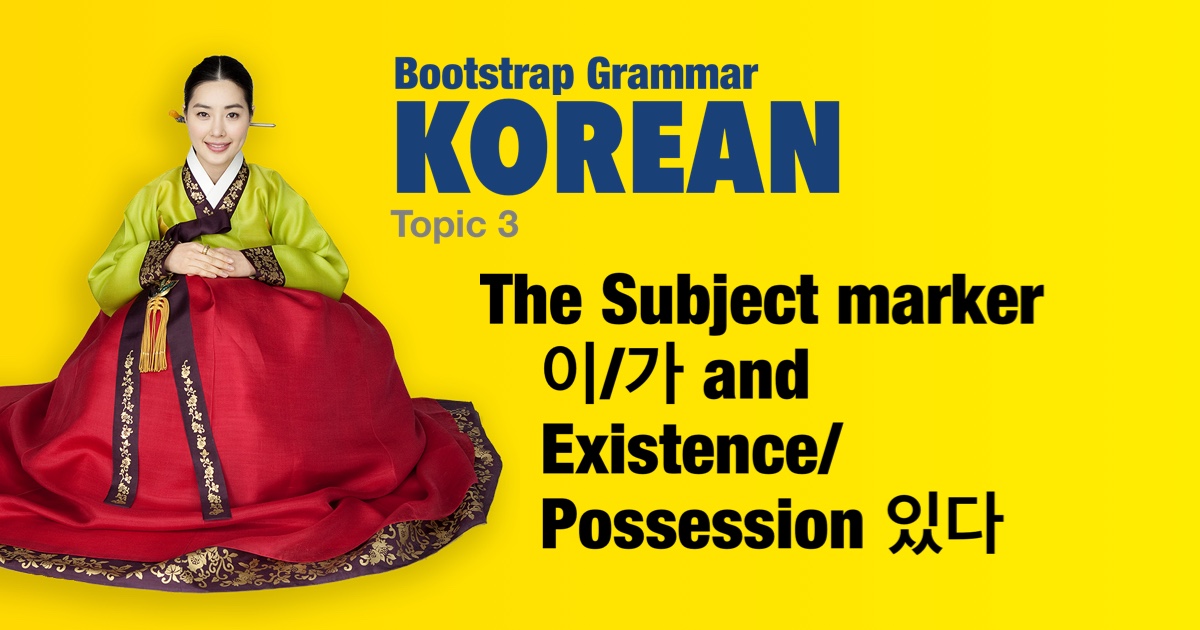Korean grammar - The Subject marker 이/가 and Existence/Possession 있다 |
|||
|
|||
Pattern: Noun + 이/가 and the verb 있다 The verb 있다 is used to express existence: 'to exist' or 'there is' . Or possession: 'to have'. 있다 (with the 다 ending) is its dictionary or infinitive form. When in a sentence, it will conjugate depending on how it is used. • For instance, in the present tense 있다 becomes 있어요. The object noun that is said to exist or be possessed using 있다 is typically marked with the Subject marker 이/가. • Use 이 if the noun ends with a consonant sound; • and use 가 if the noun ends with a vowel. |
| Examples: | |
|
쥐가 있어요.
There is a mouse.
|
|
|
아이가 있어요.
(I) have a child.
|
|
|
강이 있어요.
There is a river.
|
|
|
컴퓨터가 있어요.
(I) have a computer.
|
|
|
우산이 있어요?
Do (you) have an umbrella?
|
|
|
꽃이 있어요.
There is a flower.
|
|
|
나무가 있어요?
Is there a tree?
|
|
|
사과가 있어요.
(I) have an apple.
|
|
|
모자가 있어요?
Does (he) have a hat?
|
|
|
책이 있어요.
There is a book.
|
|
|
펜이 있어요?
Do (you) have a pen?
|
|
 |
|




